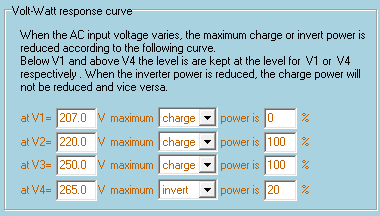Is there a way for the system to adjust grid feeding per phase in such a way that the amount of energy fed to the grid be controlled by the grid voltage on each phase?
The more my system feeds the grid the higher the grid voltage gets.
When 253V is reached PV inverter turns off and waits for the grid voltage to drop below 253V. It is enough for one phase to reach 253V for the all phases to turn off.
Can the system redirect power from phase with the highest voltage to the phase with the lowest and this way avoid turning PV inverter off. If transferring power is not enough to avoid grid over-voltage, freqency shifting could be used to lower the PV power.






